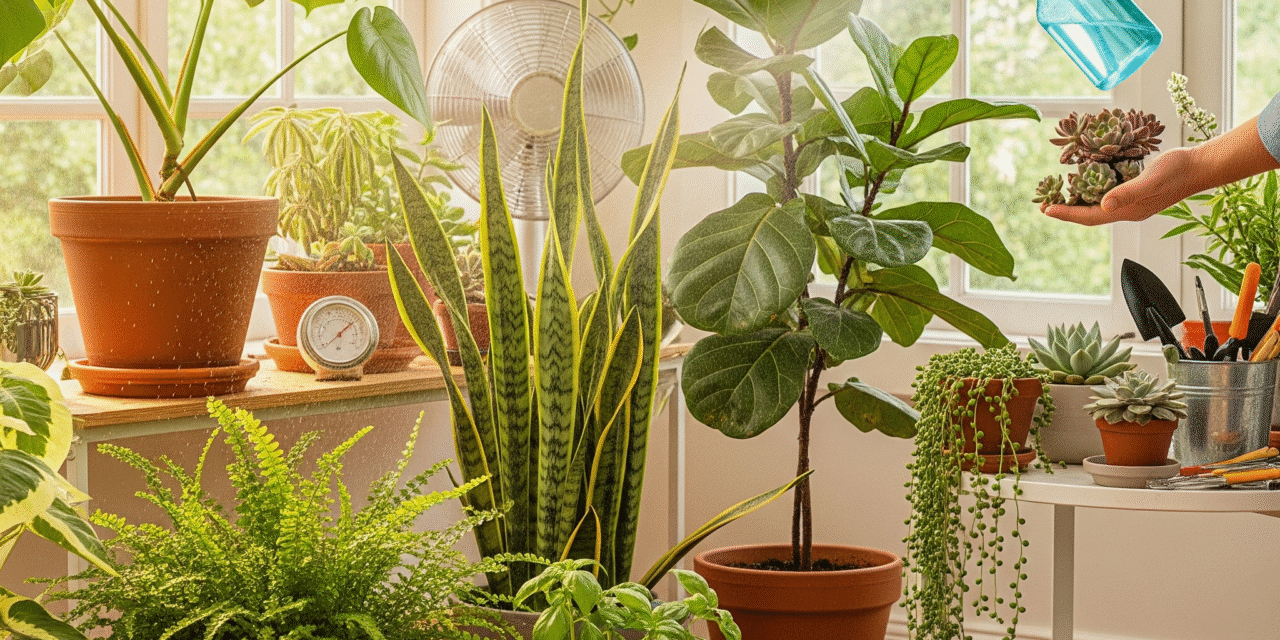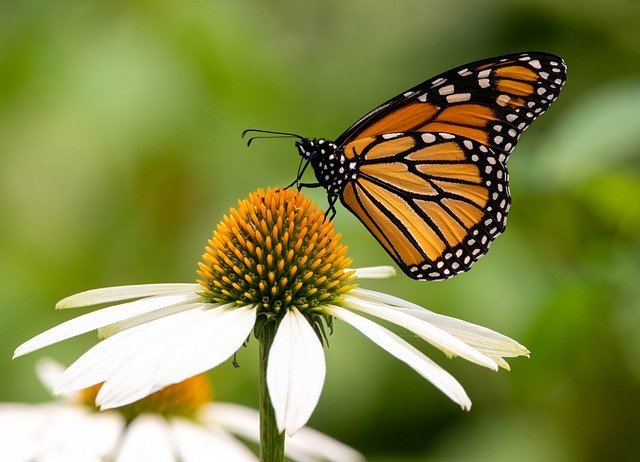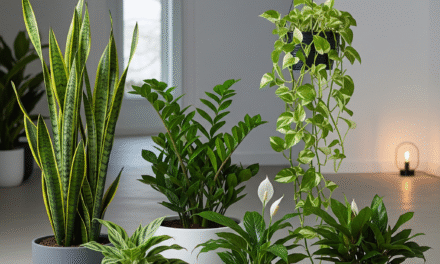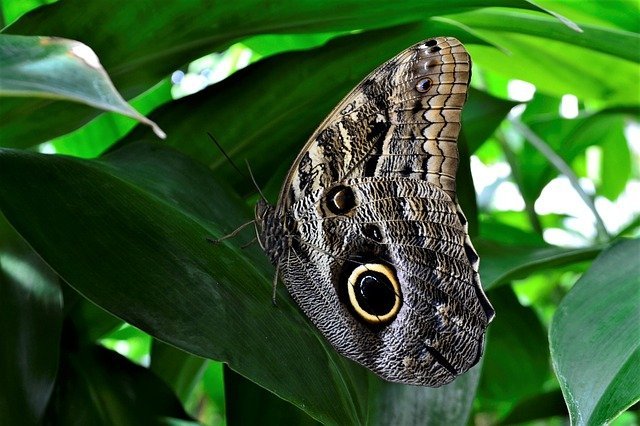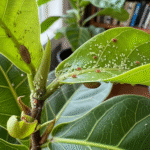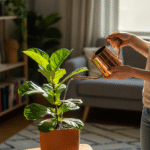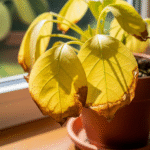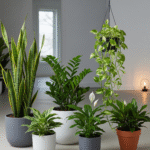Caring for indoor plants during summer heat requires extra attention to their watering, light, and humidity needs. Increased temperatures cause soil to dry out faster, so checking moisture levels regularly and adjusting watering frequency is essential. Providing shade from intense sunlight and maintaining proper humidity helps prevent leaf burn and dryness.
Additionally, summer is a time of active growth for many indoor plants, so feeding them with balanced fertilizer and pruning dead growth will keep them vibrant. Monitoring for pests and ensuring good air circulation also supports plant health in warm conditions. With these steps, your indoor garden can thrive despite the summer heat.
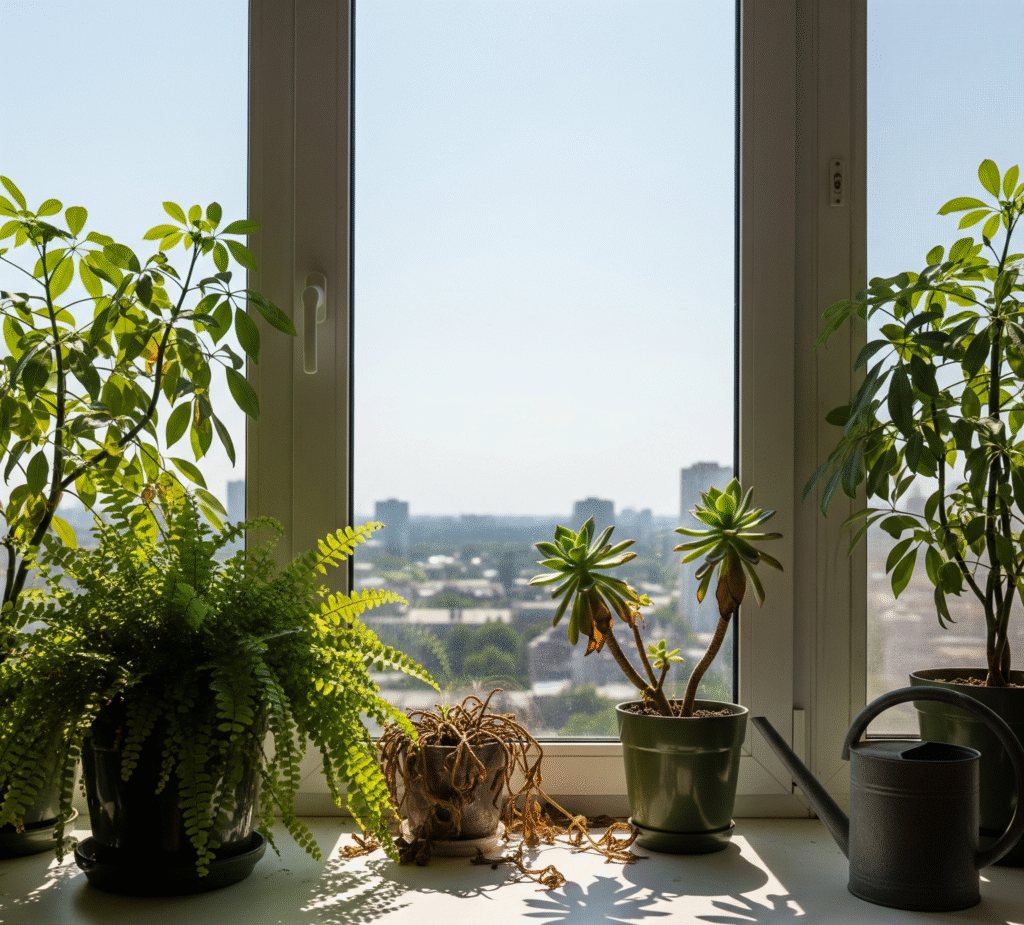
Adjust Watering Frequency
During the summer heat, water evaporates more quickly from soil, causing indoor plants to dry out faster than usual. It’s essential to check soil moisture daily by inserting your finger about an inch deep—if it feels dry, it’s time to water. Morning watering is best, as it allows plants to absorb moisture before the day’s heat intensifies. This routine helps prevent wilting and keeps your plants consistently hydrated.
However, be careful not to overwater, as excessive moisture can lead to root rot in indoor plants. Always water thoroughly until you see it draining from the bottom, but empty any standing water from trays. Adjust your watering schedule based on each plant’s needs—succulents may still require less frequent watering, while tropical varieties might need more. Paying attention to these differences ensures healthy growth all summer long.
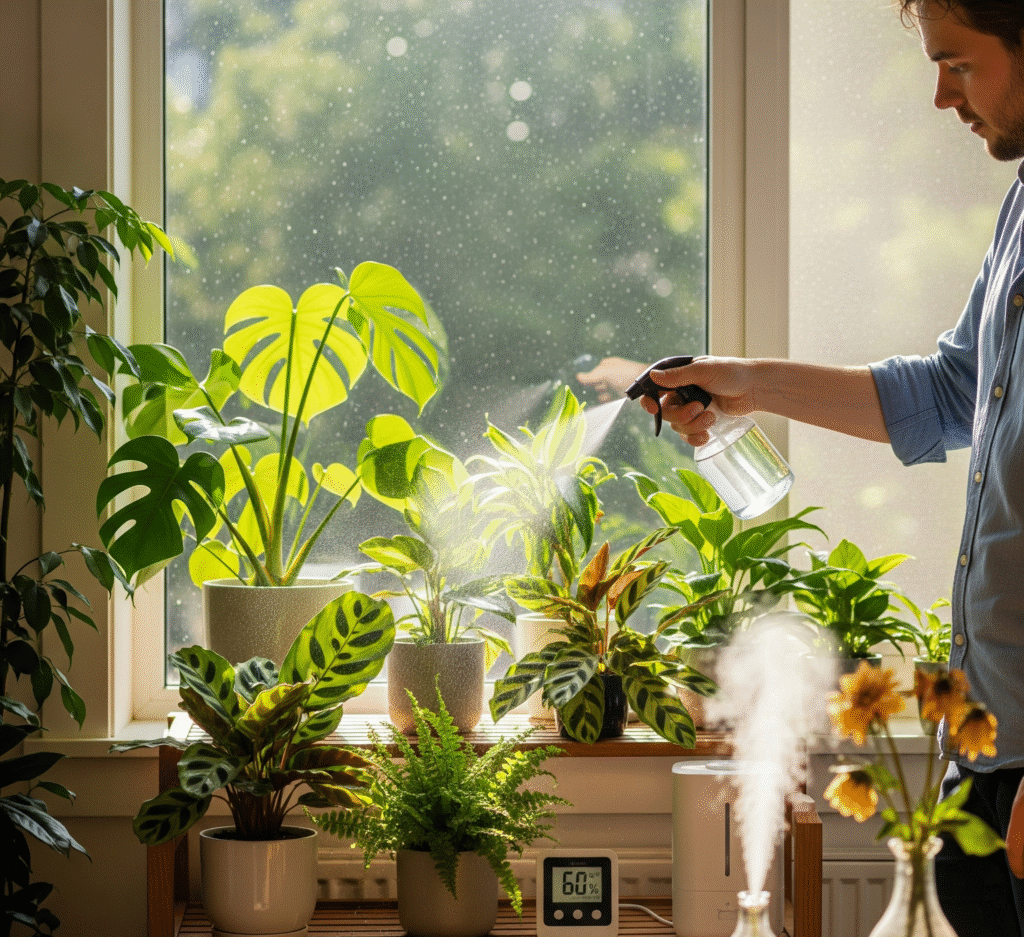
Maintain Proper Humidity
The summer heat often reduces indoor moisture levels, especially when fans or air conditioning are in use, which can stress indoor plants that thrive in a humid environment. To keep them healthy, try misting the leaves in the morning, grouping plants together, or placing a shallow tray of water and pebbles beneath their pots. These methods create a more humid microclimate, helping plants maintain vibrant foliage.
For a more consistent solution, consider using a small humidifier near your indoor plants to keep the air moisture steady. Tropical varieties, such as ferns and peace lilies, particularly benefit from higher humidity levels. By maintaining proper humidity, you’ll prevent leaf browning, curling, and other signs of dryness, ensuring your plants stay lush and green throughout the summer.
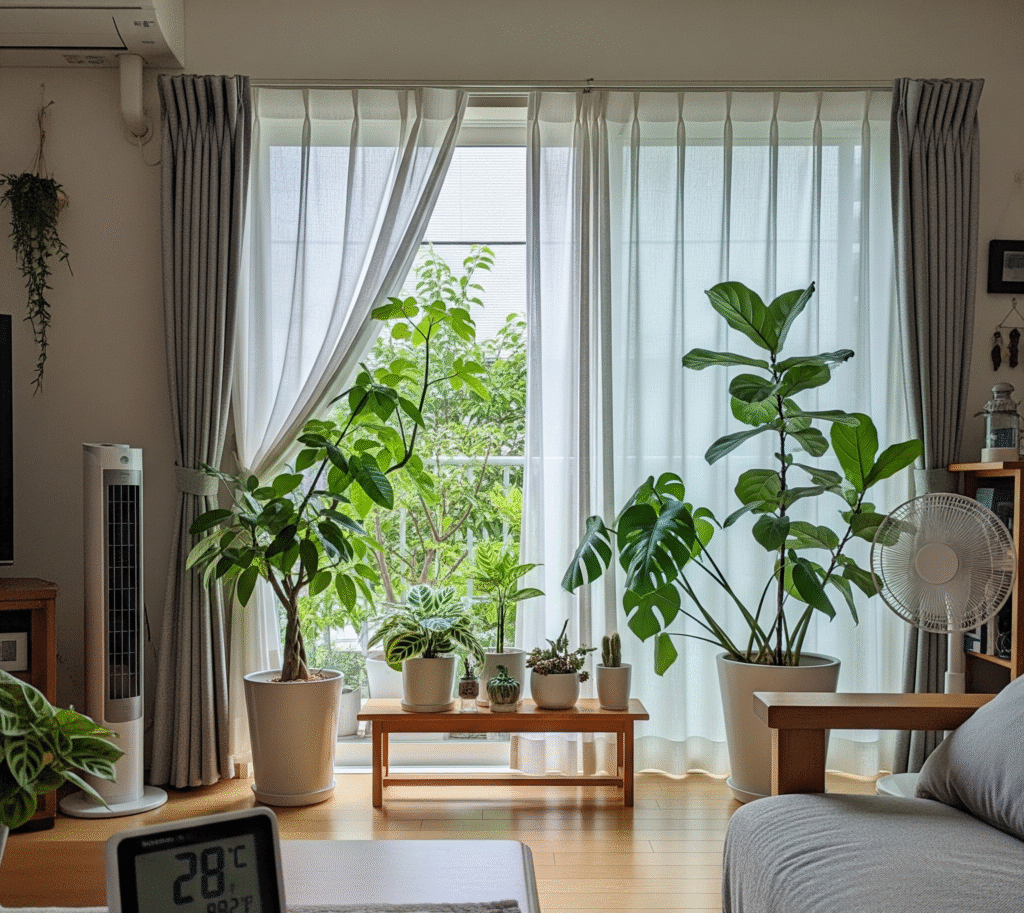
Protect from Direct Sunlight
In the summer, the intense rays streaming through windows can scorch the leaves of indoor plants, causing brown spots or faded foliage. To prevent this, move sensitive plants a few feet away from south-facing windows or use sheer curtains to diffuse harsh sunlight. This ensures they still get the light they need without suffering from leaf burn.
Some sun-loving varieties like succulents can tolerate brighter spots, but even these indoor plants should be monitored for signs of stress. If you notice wilting or discoloration, relocate them to an area with bright, indirect light. By adjusting their position, you can protect your plants from damage while supporting healthy summer growth.
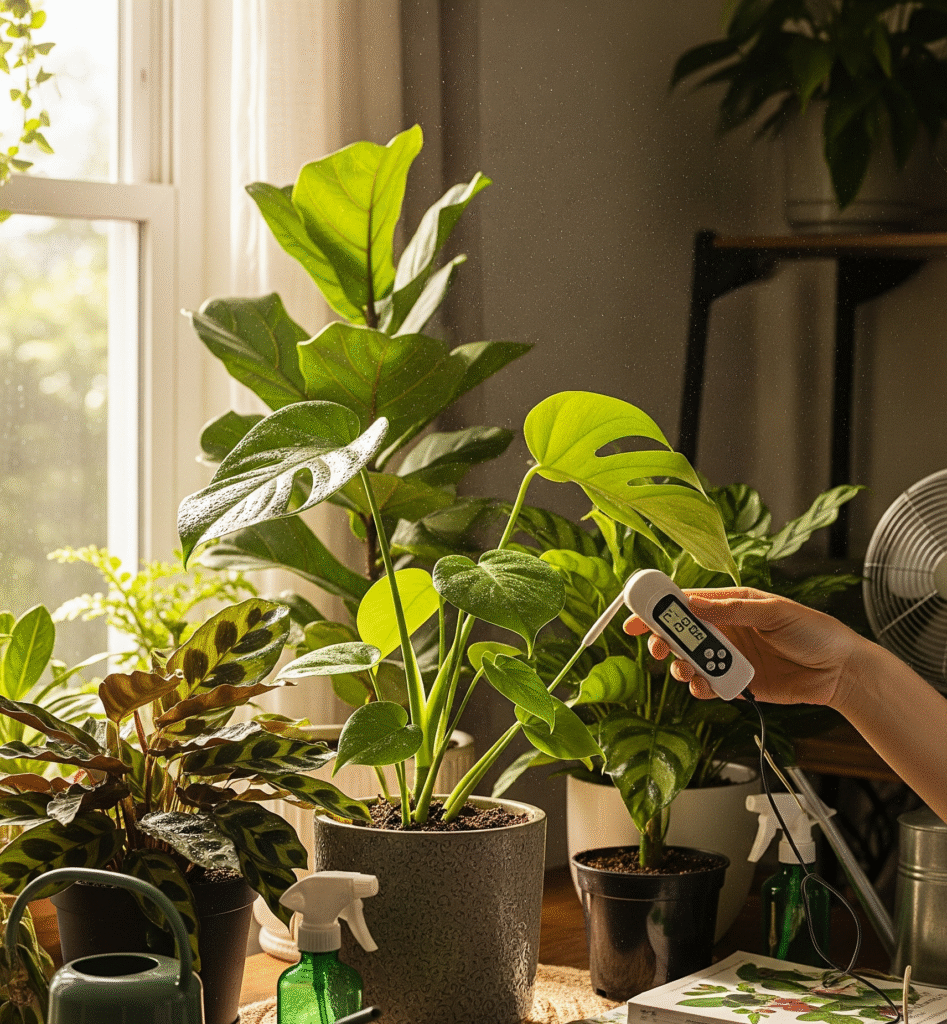
Keep an Eye on Temperature Changes
Sudden shifts in temperature can stress indoor plants, especially during the summer when heat waves or cooling systems create fluctuations. Most houseplants thrive in a stable range between 65°F and 75°F, so try to maintain consistent conditions. Avoid placing them near windows with strong midday sun or next to appliances that emit heat, as this can cause wilting.
Air conditioning can also pose a risk to indoor plants, as cold drafts may shock their foliage and slow growth. Keep plants away from direct airflow and instead choose spots with steady, moderate temperatures. By monitoring and controlling these changes, you’ll help your plants stay healthy and resilient throughout the summer heat.
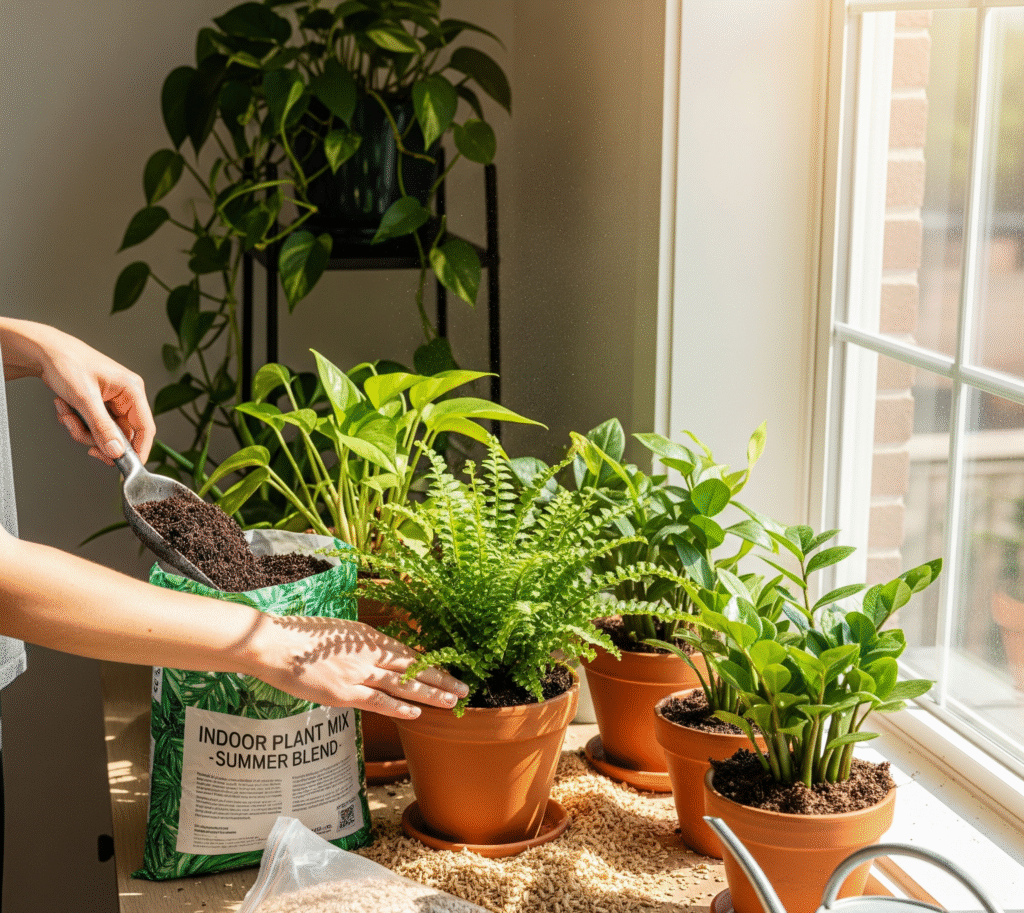
Use the Right Soil and Mulch
Choosing the right soil is essential for keeping indoor plants healthy during the summer heat. A well-draining potting mix prevents water from sitting around the roots, reducing the risk of rot. For tropical plants, a blend of peat moss, perlite, and compost offers the perfect balance of moisture retention and aeration.
Adding a thin layer of mulch, such as coconut coir or bark chips, can help indoor plants retain soil moisture and keep their roots cooler in hot weather. This simple step slows down evaporation, meaning less frequent watering is needed. Mulching also gives pots a neat, decorative touch while supporting plant health.
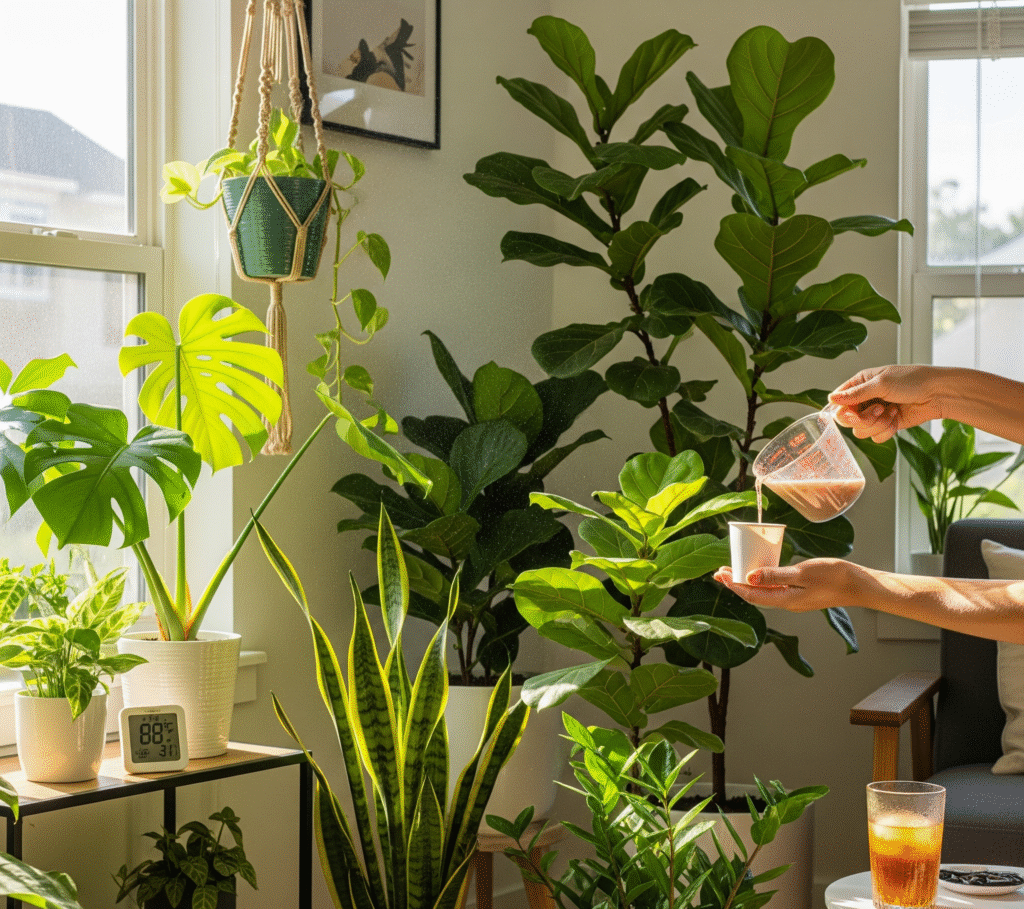
Feed Plants Regularly
Summer is the peak growing season for most indoor plants, making it the perfect time to provide extra nutrients. Use a balanced, water-soluble fertilizer every 2–4 weeks to support healthy leaves, roots, and blooms. Consistent feeding ensures plants have the energy they need to thrive in the warm months.
Be careful not to over-fertilize, as this can damage the roots of indoor plants and hinder growth. Always follow the recommended dosage on the fertilizer label and water plants before feeding to prevent nutrient burn. With the right feeding schedule, your plants will stay lush, vibrant, and full of life all summer long.
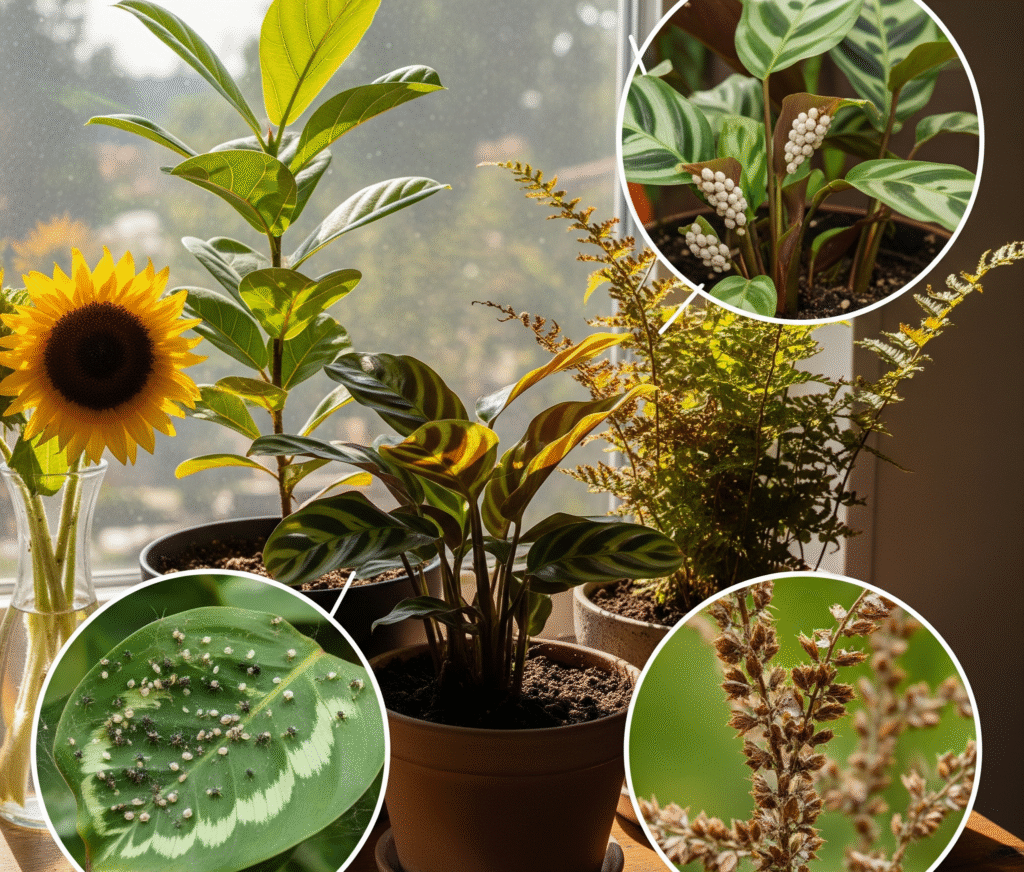
Watch for Pests
Warm summer conditions can attract unwanted pests that damage indoor plants, such as spider mites, aphids, and fungus gnats. Check your plants regularly, especially the undersides of leaves and around new growth, for any signs of infestation. Early detection makes it easier to control pests before they spread.
If pests appear, isolate the affected indoor plants and treat them promptly with neem oil, insecticidal soap, or a mild soap-and-water solution. Keeping plants healthy with proper watering, airflow, and cleanliness can also reduce the chances of pest problems. Vigilance is key to ensuring your plants stay pest-free and thriving during the summer heat.

Improve Air Circulation
Good airflow is essential for keeping indoor plants healthy during the summer heat, as it helps prevent mold, mildew, and pest infestations. Using a ceiling fan or a small oscillating fan on a low setting can keep air moving gently around your plants without drying them out too quickly. Proper circulation also reduces stagnant air, which can harbor harmful pathogens.
Avoid placing fans too close to indoor plants, as strong airflow can damage delicate leaves and speed up soil moisture loss. Instead, position fans at a distance to create a soft breeze that reaches all plants in the room. This simple step promotes a healthier environment and supports vibrant growth throughout the warmer months.
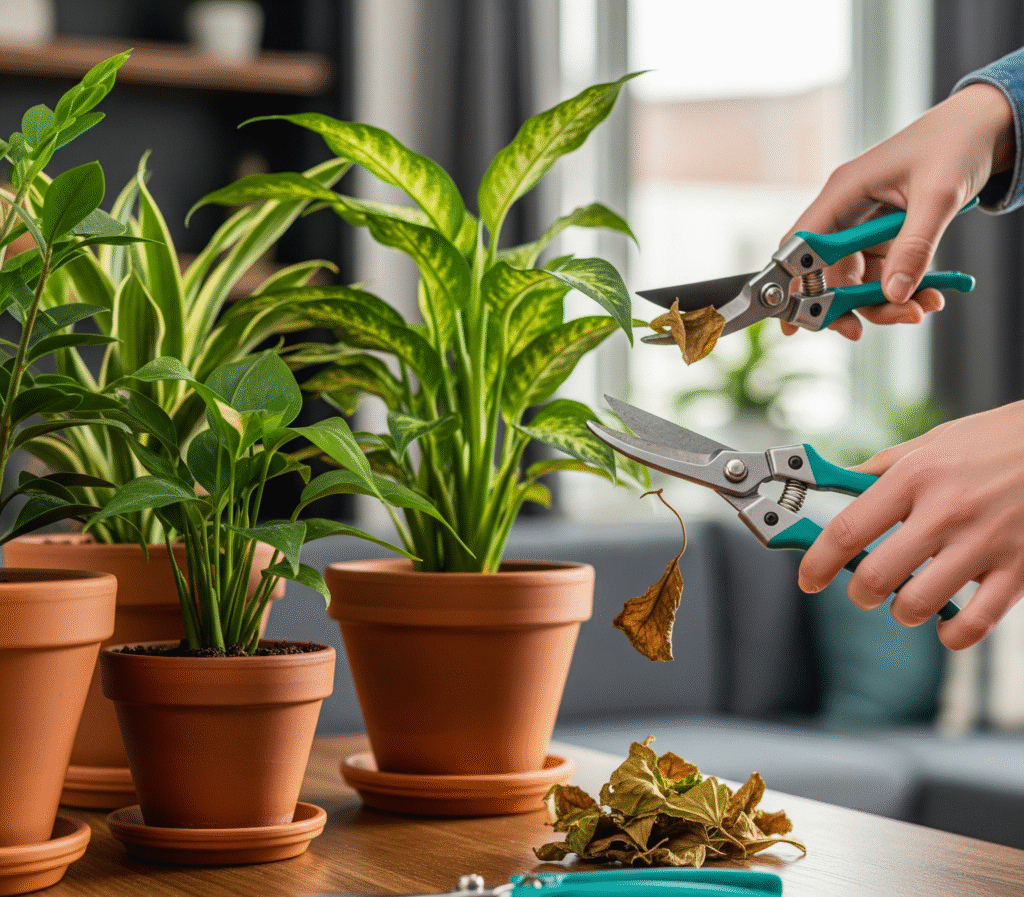
Prune and Remove Dead Growth
Regular pruning keeps indoor plants healthy and attractive, especially during the summer when growth is at its peak. Removing yellowed leaves, dried stems, and faded blooms allows the plant to redirect energy toward producing fresh foliage and flowers. This also improves air circulation around the plant, reducing the risk of disease.
Use clean, sharp scissors or pruning shears when trimming indoor plants to prevent spreading infections. For vining or leggy plants, cutting back overgrown stems encourages bushier and more compact growth. A consistent pruning routine will keep your plants looking vibrant and thriving all summer long.
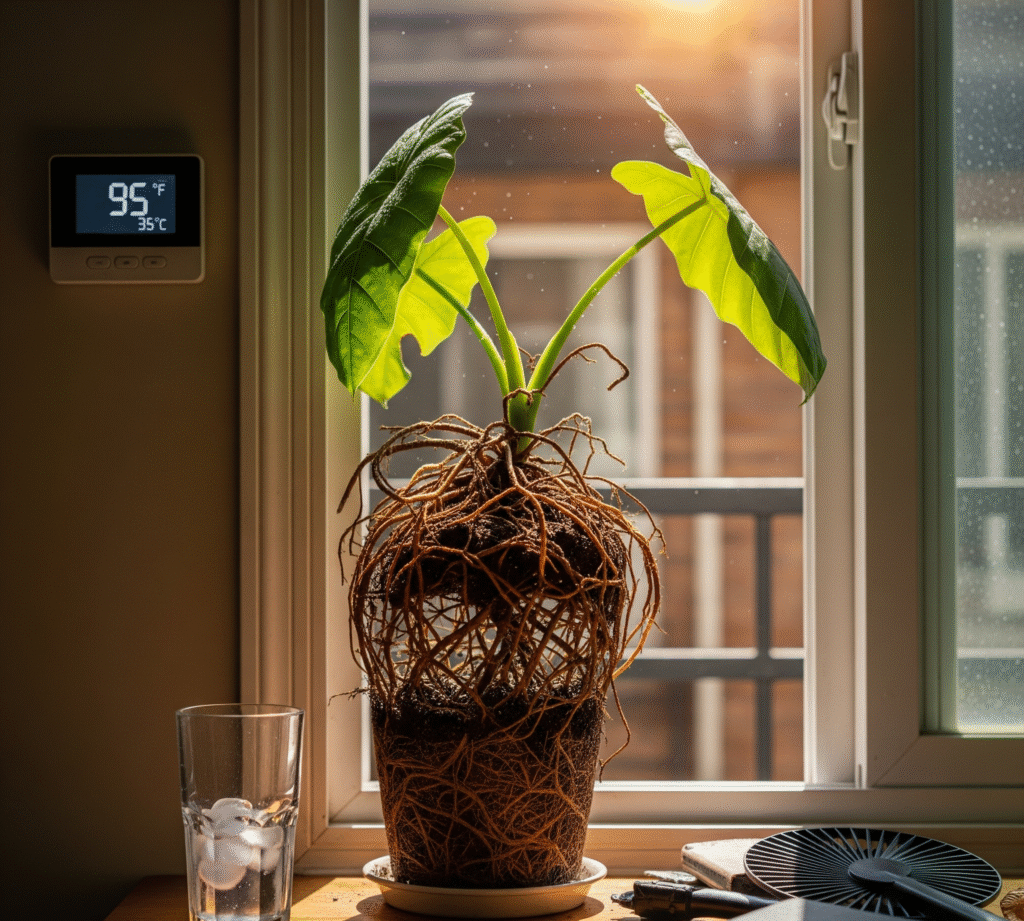
Repot if Necessary
Summer is an ideal time to repot indoor plants that have outgrown their containers, as the warm weather encourages quicker recovery and growth. Signs that a plant needs repotting include roots circling the bottom of the pot, water draining too quickly, or slowed growth despite proper care. Moving to a slightly larger pot with fresh soil gives roots more space and nutrients.
When repotting indoor plants, choose a container that is only 1–2 inches larger in diameter than the current one to avoid excess soil that can hold too much moisture. Use a well-draining potting mix and gently loosen the roots before placing the plant in its new home. This refresh will promote healthier root systems and more vigorous summer growth.
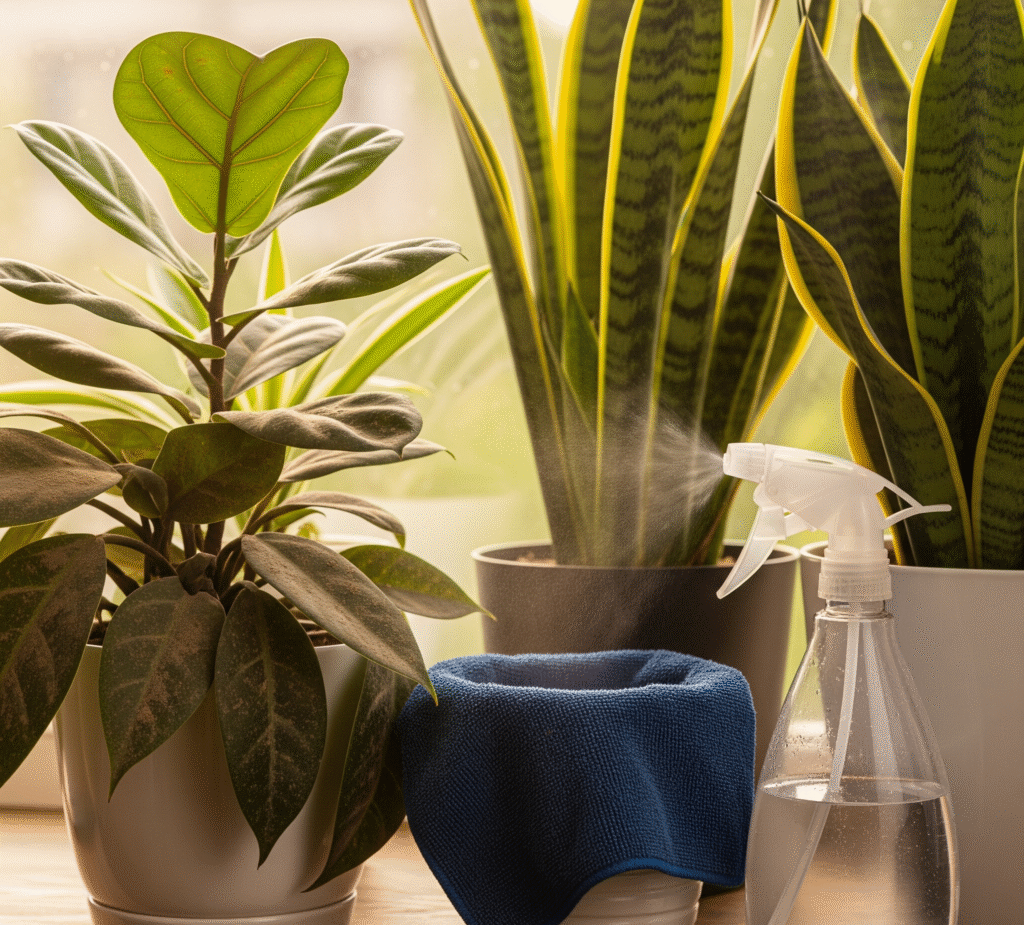
Clean the Leaves
Dust buildup on the leaves of indoor plants can block sunlight and hinder photosynthesis, which is especially important during the active summer growth period. Gently wipe large leaves with a damp cloth or sponge to remove dust and improve their ability to absorb light. This simple care step also enhances the overall appearance of your plants.
For smaller or delicate indoor plants, you can give them a gentle shower with lukewarm water to wash away dirt and pests. Be sure to let the foliage dry completely before returning them to their usual spot to prevent fungal issues. Regular leaf cleaning keeps plants looking fresh, healthy, and ready to thrive in summer heat.
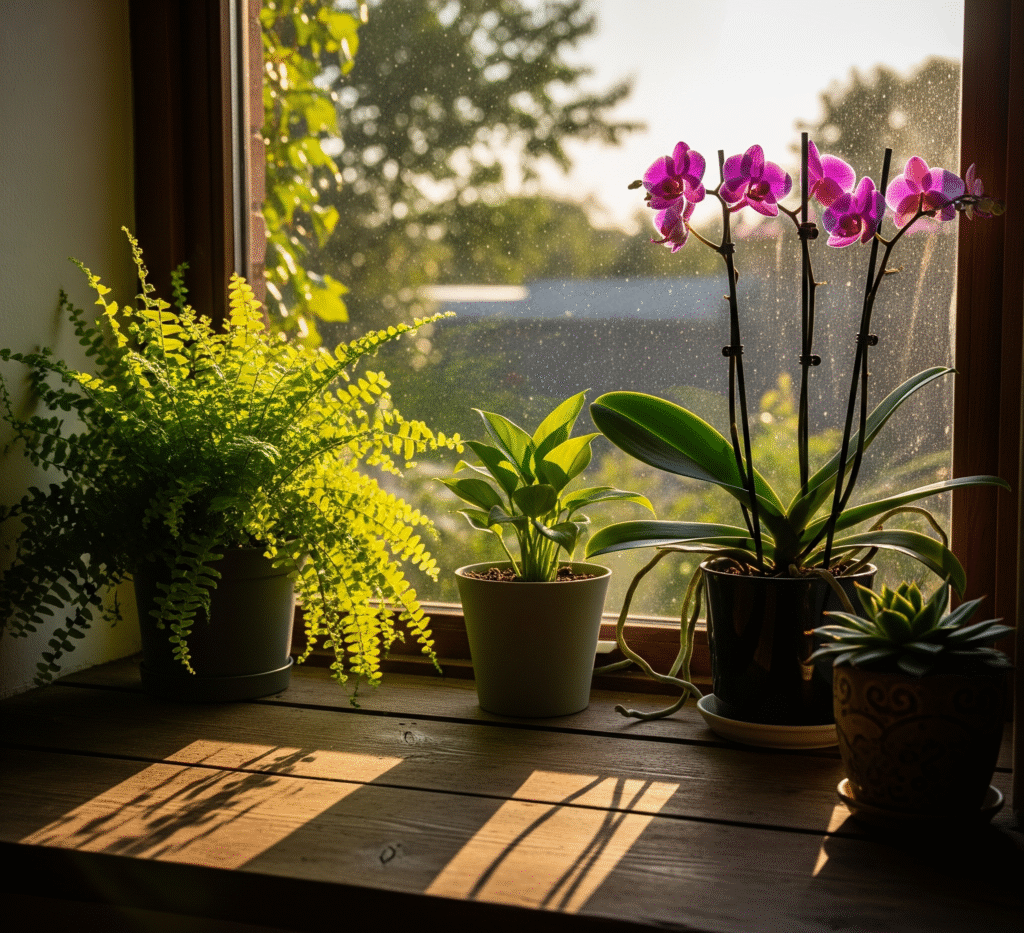
Adjust Light as the Sun Shifts
During summer, the sun’s position changes, and this can alter how much light indoor plants receive in different spots of your home. A location that was perfect in spring might now get too much intense sunlight, risking leaf burn. Monitor light patterns throughout the day and move plants as needed to ensure they still get the right amount of brightness without stress.
Some indoor plants may benefit from being placed farther from windows or shielded with sheer curtains to diffuse harsh rays. Conversely, low-light plants may need to be moved to brighter spots to keep up with summer growth demands. Adjusting their position as the season progresses will help maintain their health and vibrant color.
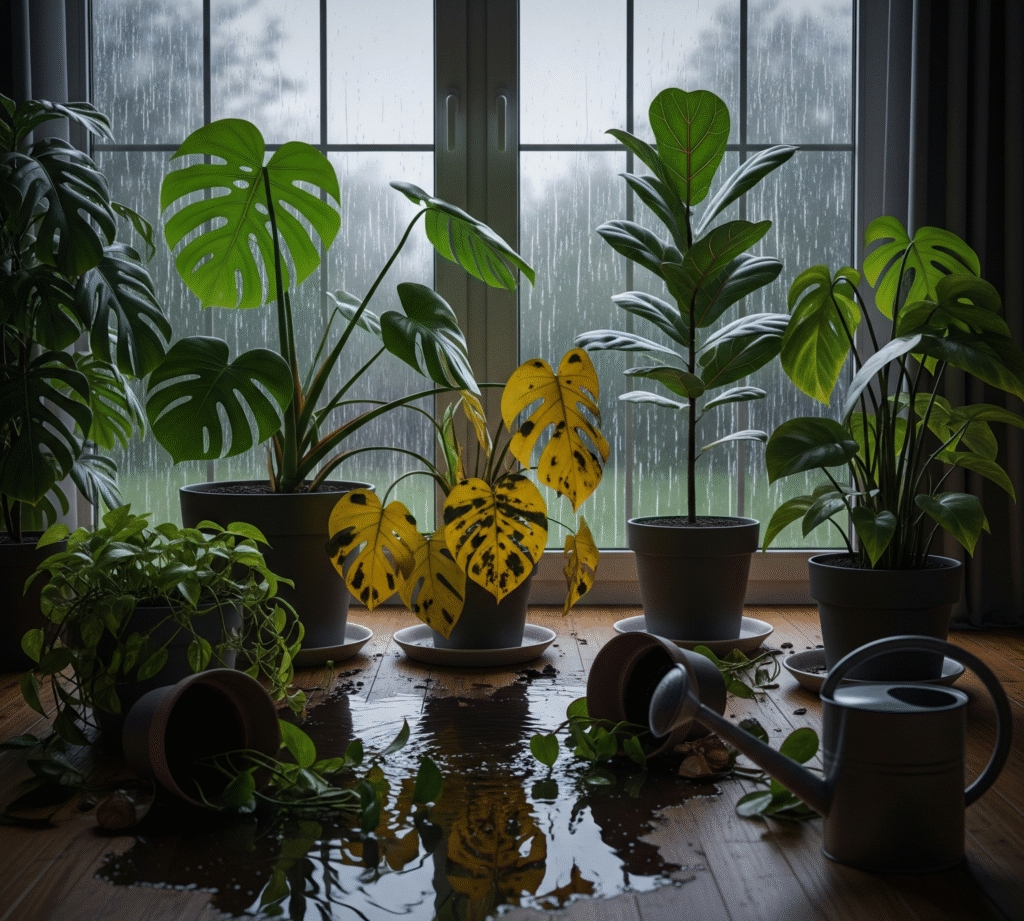
Avoid Overwatering During Rainy Spells
In regions where summer heat is accompanied by heavy rains or high humidity, indoor plants may not need as much water as usual. Excess moisture in the air slows down soil drying, increasing the risk of root rot if you water too often. Always check the soil’s moisture level before watering to ensure it truly needs it.
Some indoor plants, especially succulents and cacti, are more sensitive to overwatering during humid conditions. Reduce your watering frequency and allow the top layer of soil to dry out between waterings. By adjusting to the weather, you can keep roots healthy and prevent water-related plant stress.
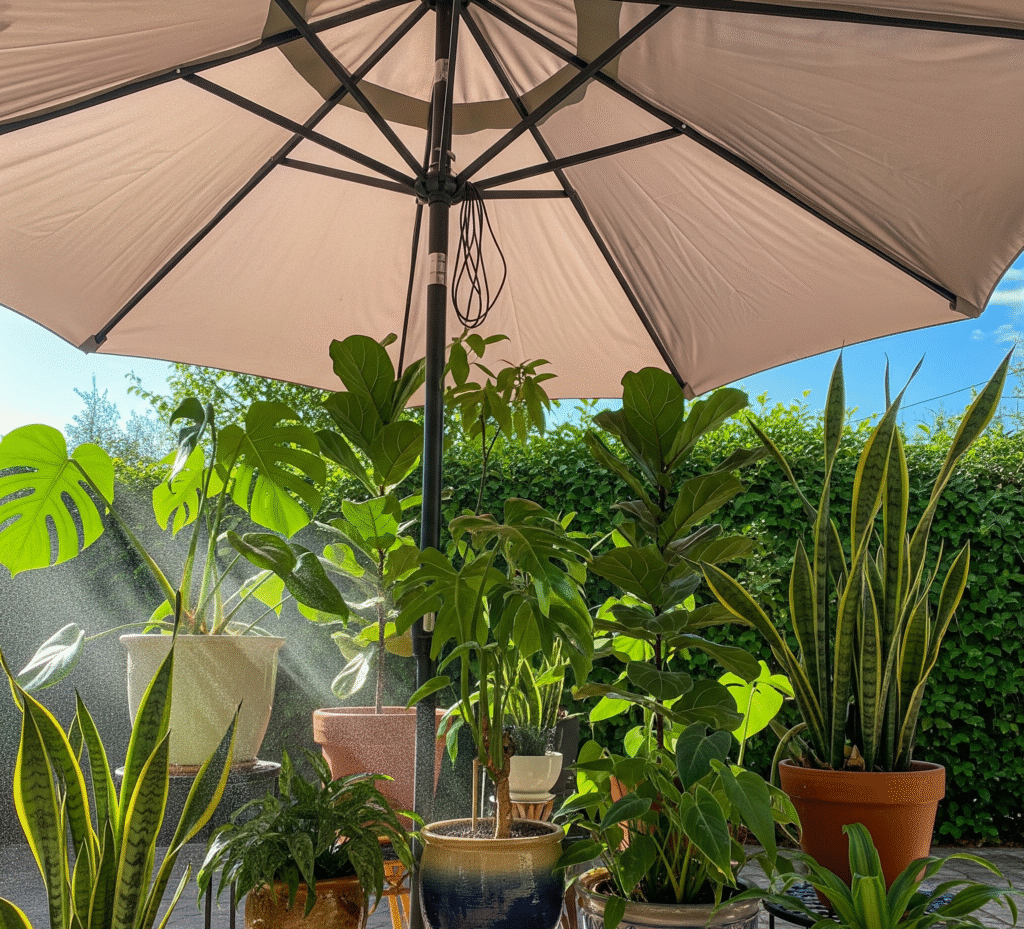
Provide Shade Outdoors for Potted Indoor Plants
If you move indoor plants outdoors during summer, remember that natural sunlight is far stronger than what they receive indoors. Direct exposure can scorch leaves and cause stress, especially for shade-loving species. Place them under a patio, tree canopy, or shade cloth to filter harsh sunlight while still allowing them to enjoy fresh air.
Gradually acclimate indoor plants to outdoor conditions by introducing them to shaded areas for a few hours a day before extending their time outside. This slow adjustment helps prevent shock and leaf burn. With the right balance of shade and light, your plants can thrive outdoors without suffering from summer heat damage.
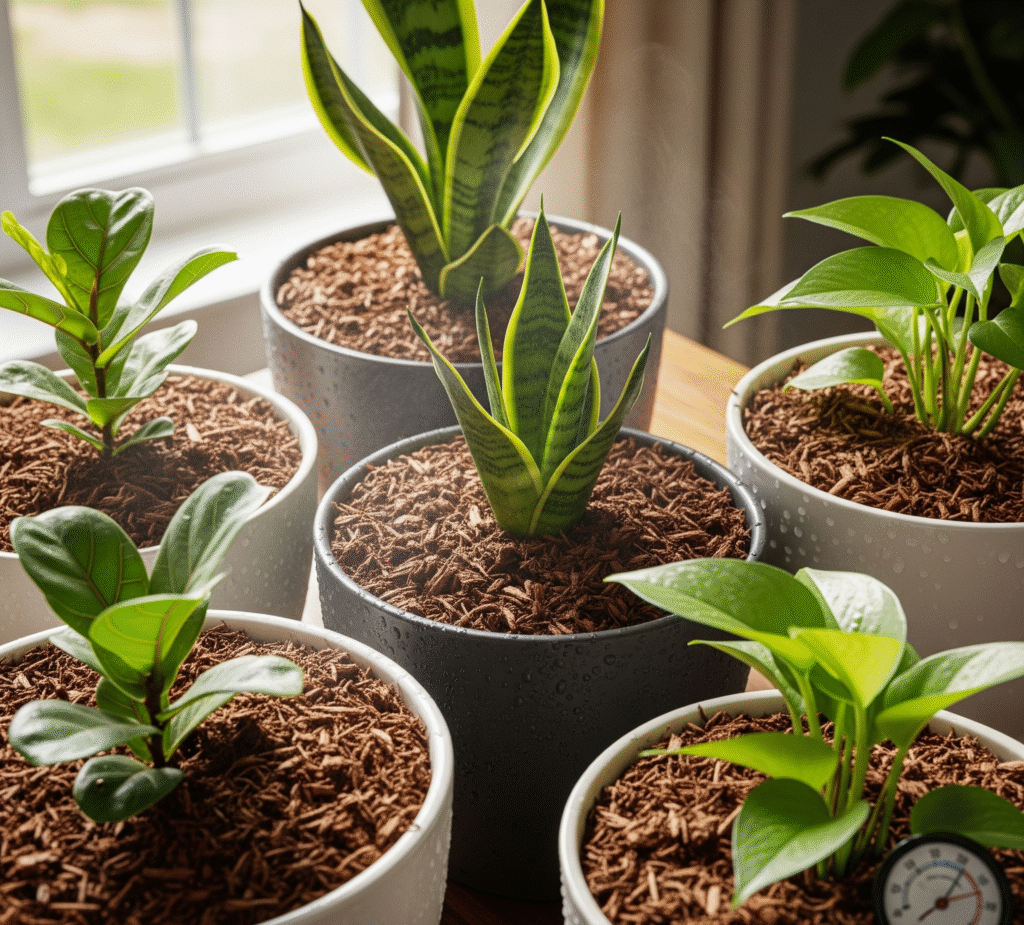
Mulch to Conserve Moisture
Applying a thin layer of mulch on the soil surface helps indoor plants retain moisture during hot summer days. Materials like coconut coir, bark chips, or shredded moss reduce evaporation and keep the soil cooler, protecting roots from heat stress. This simple step also lessens the need for frequent watering.
Be sure not to pile mulch directly against the stems of indoor plants, as this can trap excess moisture and cause rot. Spread it evenly across the topsoil, leaving a small gap around the plant base. With proper mulching, your plants will stay hydrated and healthier throughout the summer heat.
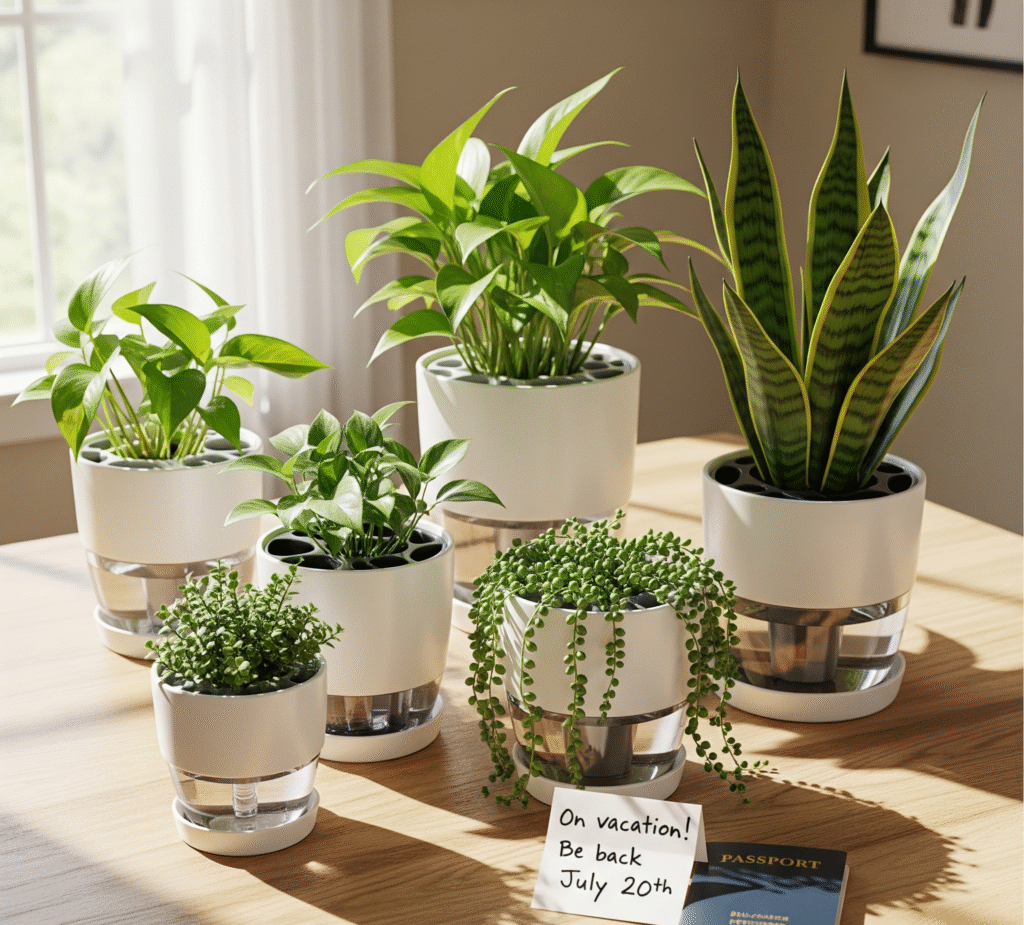
Use Self-Watering Pots for Vacations
When traveling during summer, self-watering pots are an excellent way to keep indoor plants hydrated without constant attention. These pots provide a steady supply of moisture to the roots, reducing the risk of plants drying out in your absence. They are especially useful for heat-sensitive varieties that need consistent watering.
For smaller indoor plants, water globes or wicking systems can also help maintain moisture levels while you’re away. Grouping plants together in a cool, shaded area creates a mini-humid environment, further reducing water loss. With these methods, you can enjoy your vacation knowing your plants are cared for.

Monitor for Heat Stress Signs
High summer temperatures can cause indoor plants to show signs of heat stress, such as wilting, yellowing leaves, or crispy brown edges. If you notice these symptoms, act quickly by moving the plant to a cooler, shaded spot and giving it a thorough watering. Prompt action can help prevent long-term damage.
Some indoor plants may also slow their growth or drop leaves when stressed by heat. Keep a close watch during heat waves and adjust care routines, such as watering frequency and light exposure. By identifying and responding to these early warning signs, you can help your plants recover and stay healthy throughout the summer.

Avoid Sudden Changes in Environment
Sudden shifts in temperature, light, or humidity can shock indoor plants, especially during the hot summer months. Moving them abruptly from a shaded area to direct sunlight, or from a warm room to a cool air-conditioned space, can cause leaf drop and slowed growth. Gradual transitions help plants adapt without stress.
When relocating indoor plants, do so in small steps—introduce them to new light levels or temperatures for a few hours each day before making the change permanent. This gentle approach allows them to adjust naturally, keeping their foliage healthy and vibrant throughout the summer heat.
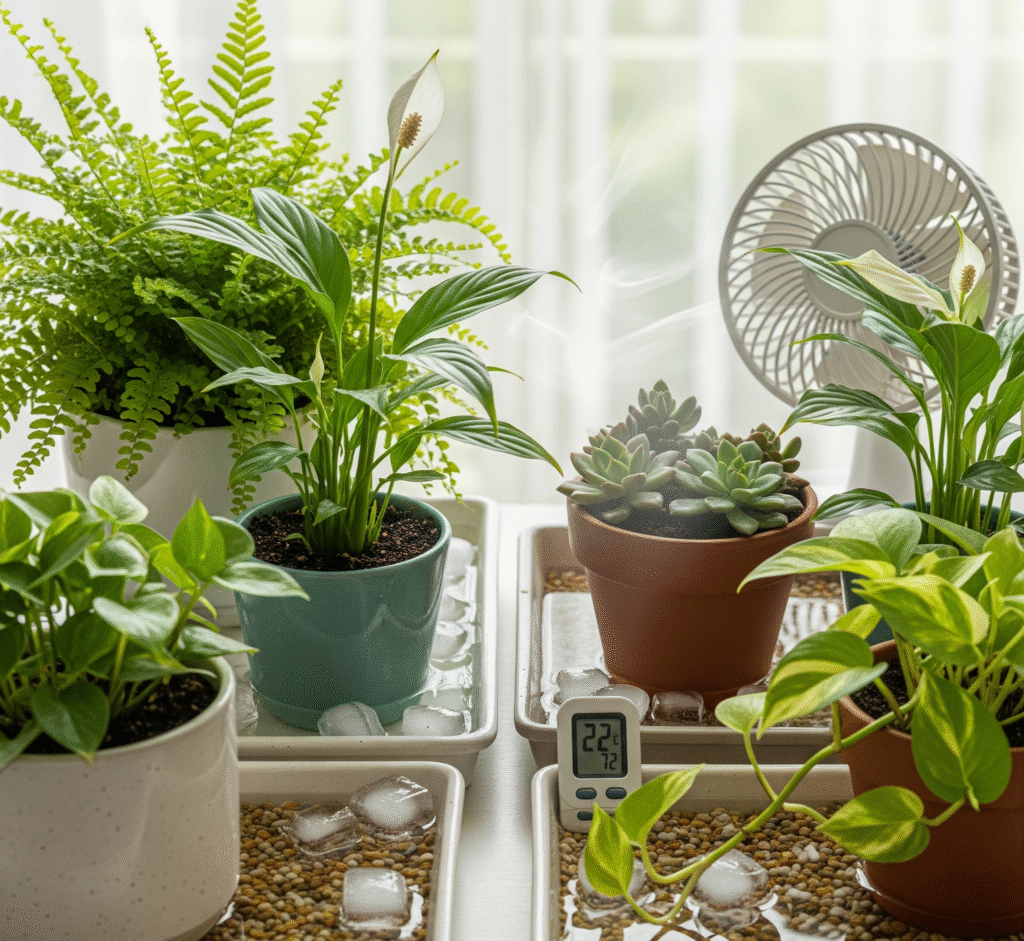
Keep Pots Cool
In summer heat, dark-colored pots can absorb excess warmth, causing the soil to heat up and stress the roots of indoor plants. To prevent this, opt for light-colored containers or place darker pots inside decorative baskets or covers. This helps regulate soil temperature and keeps roots comfortable.
You can also move indoor plants away from hot windowsills or tile floors that radiate heat. Adding a layer of mulch on top of the soil provides extra insulation, keeping the potting mix cooler for longer. Maintaining a stable, cool environment for the roots will promote healthier growth during the hottest months.
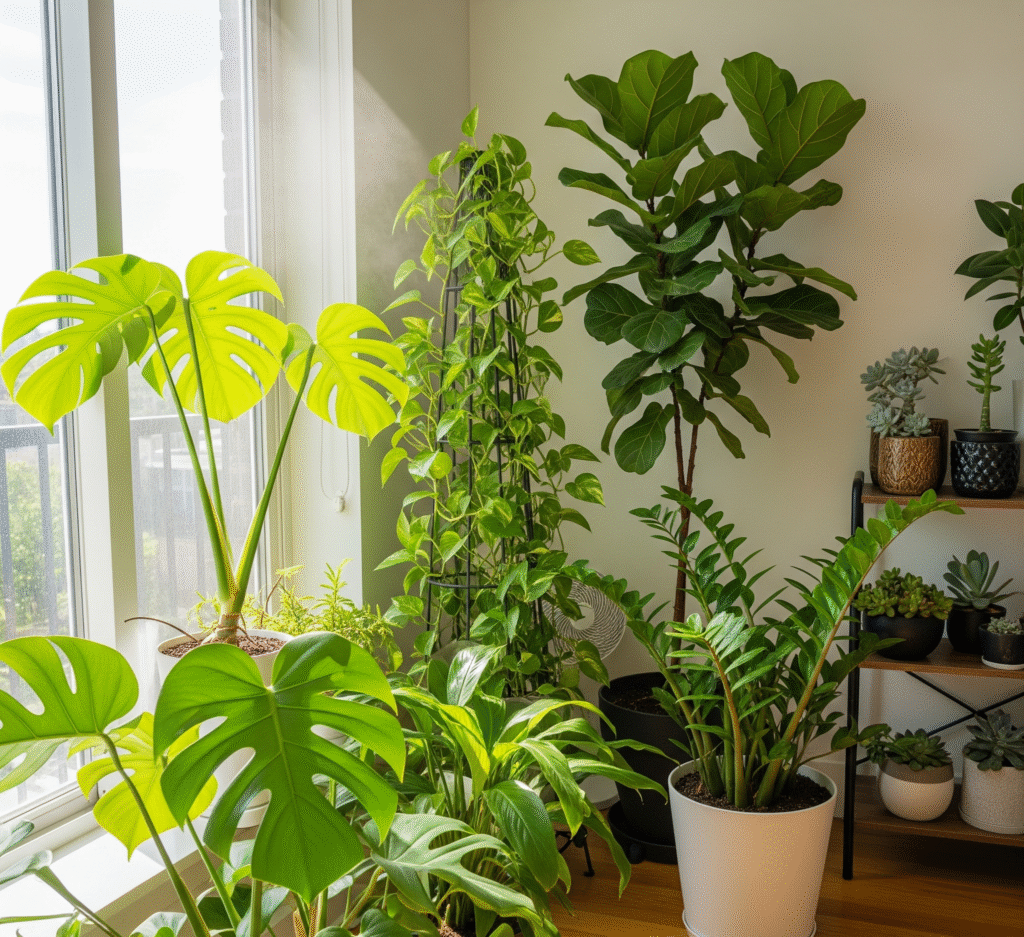
Enjoy the Growth Season
Summer is the prime growing period for most indoor plants, with longer daylight hours and warmer temperatures encouraging fresh leaves, flowers, and new shoots. Take this opportunity to appreciate the lush greenery and vibrant colors your plants bring to your home. Regular care during this time will reward you with healthier, fuller plants.
You can also experiment with propagating indoor plants in summer, as many varieties root faster in warm conditions. Whether it’s taking stem cuttings or dividing mature plants, this season offers the perfect chance to expand your indoor garden. Embrace the growth season and enjoy watching your plants flourish.

